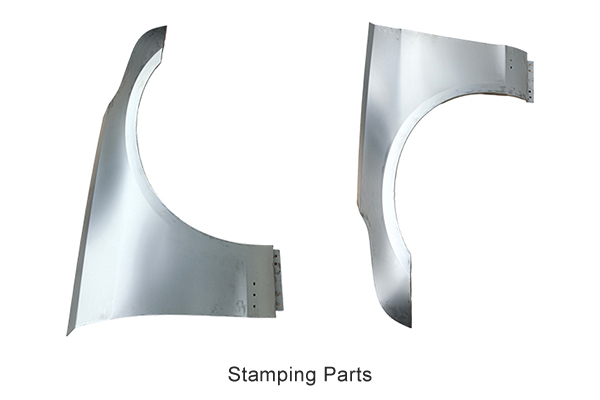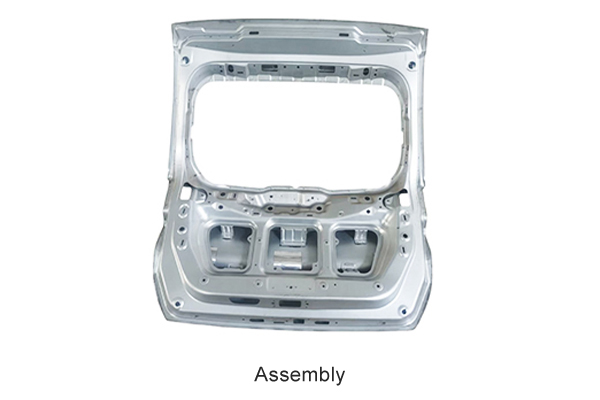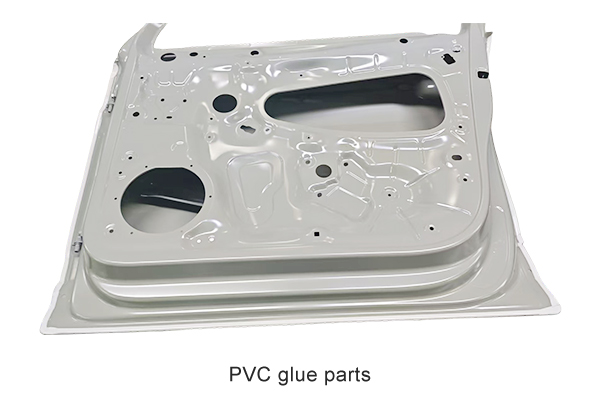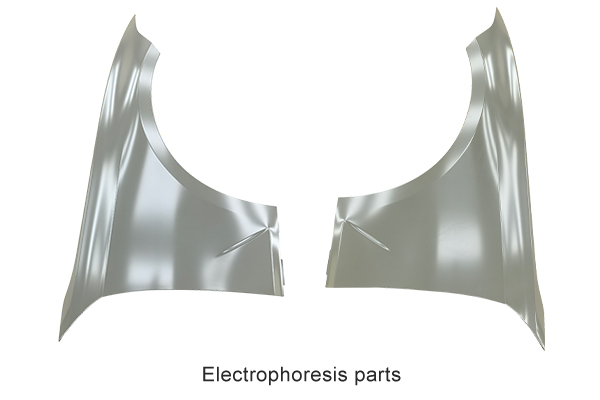What are the differences between steel spot welding robots and traditional welding methods?
Release Time : 2024-12-23
Compared with traditional welding methods, steel spot welding robots have many differences. The following is a specific comparative analysis:
1. Welding efficiency and quality
Spot welding robots:
High efficiency: Spot welding robots can work continuously at extremely high speeds without fatigue restrictions. The welding speed is much higher than manual welding, so the production efficiency is much higher than manual. On large-scale production lines, this high efficiency can significantly shorten the product manufacturing cycle and increase production capacity.
High precision: Spot welding robots are equipped with advanced sensors and control systems, which can accurately control welding paths, speeds and forces, as well as welding current, voltage, time and other parameters to ensure the accuracy and quality stability of welds.
High welding quality: Due to the extremely short welding time and small heat-affected zone, the welds are formed quickly and firmly, and the welding quality is stable and reliable.
Traditional welding:
Slow welding speed: The heat source of traditional welding is relatively dispersed and the heating time is long, so it takes a long welding time, which reduces production efficiency.
Low welding flexibility: The heat source of traditional welding is a contact heat source, which is limited by physical factors such as electrodes, welding rods, and shielding gases, so it is difficult to adapt to various complex welding positions and shapes, reducing production flexibility.
Large heat-affected zone: Traditional welding methods generate large amounts of heat during welding, and the heat-affected zone on the surrounding materials is also large, which can easily lead to deformation of the workpiece and welding defects.
2. Cost and investment
Spot welding robot:
High initial investment cost: Purchasing and maintaining welding robots, including equipment purchase and automation system integration, requires a large initial investment, which may pose an economic pressure for some small and medium-sized enterprises.
High maintenance cost: Although robots have high reliability, they still require regular inspection, calibration, replacement and other maintenance work, which will incur certain costs.
Traditional welding:
Low equipment cost: Traditional welding equipment is relatively simple, and the purchase and maintenance costs are low.
Low energy consumption cost: Traditional welding equipment only consumes a small amount of electricity, so its energy consumption cost is also relatively low.
3. Working environment and safety
Spot welding robot:
Strong safety: The arc, high temperature and harmful gases generated during welding pose a threat to workers' health. Robots can operate in closed or dangerous environments, greatly reducing the risk of industrial accidents.
Improve the working environment: Robot welding reduces the waste of materials caused by welding defects. At the same time, factors harmful to the human body such as smoke, harmful gases and arc light generated during welding are effectively controlled in robot welding.
Traditional welding:
Poor working environment: Long-term electric welding work will have a certain impact on the health of welders, such as the generation of smoke, harmful gases and arc radiation.
4. Flexibility and scalability
Spot welding robot:
Strong adaptability: Welding robots can be programmed to adapt to different welding needs and complex process requirements, and can also adapt to a variety of welding tasks by replacing different welding tools, with high flexibility.
Easy to integrate: Welding robots can be integrated with other automation equipment (such as conveyor belts, fixtures, etc.) to form an automated production line and improve overall production efficiency.
Upgrade and expansion: With the continuous advancement of technology, welding robots can continuously improve their performance and functions through software upgrades and hardware expansions.
Traditional welding:
Strict technical requirements: In order to ensure the quality of welding, welders need to have solid professional skills and rich practical experience. For complex welding tasks, professional training and strict assessment are also required.
5. Application Scope
Spot welding robots: With their outstanding efficiency and welding quality, they have occupied a place in many industrial manufacturing fields, especially in large-scale and high-efficiency industrial production fields such as automobile manufacturing, home appliance manufacturing, and electronic manufacturing.
Traditional welding: Due to its wide adaptability, it plays an important role in maintenance, DIY projects, specific material and process requirements, education and training, etc. These fields have high requirements for welding strength, reliability and versatility, and traditional welding methods can meet these needs.
Steel spot welding robots and traditional welding methods have their own advantages. With its high efficiency, precision and automation, spot welding robots have become an ideal choice for pursuing large-scale and high-efficiency industrial production; while traditional welding methods still have an irreplaceable position in specific fields due to their low cost and flexible operation. When choosing a welding method, comprehensive consideration should be given to factors such as specific application scenarios, material properties, and production efficiency.
1. Welding efficiency and quality
Spot welding robots:
High efficiency: Spot welding robots can work continuously at extremely high speeds without fatigue restrictions. The welding speed is much higher than manual welding, so the production efficiency is much higher than manual. On large-scale production lines, this high efficiency can significantly shorten the product manufacturing cycle and increase production capacity.
High precision: Spot welding robots are equipped with advanced sensors and control systems, which can accurately control welding paths, speeds and forces, as well as welding current, voltage, time and other parameters to ensure the accuracy and quality stability of welds.
High welding quality: Due to the extremely short welding time and small heat-affected zone, the welds are formed quickly and firmly, and the welding quality is stable and reliable.
Traditional welding:
Slow welding speed: The heat source of traditional welding is relatively dispersed and the heating time is long, so it takes a long welding time, which reduces production efficiency.
Low welding flexibility: The heat source of traditional welding is a contact heat source, which is limited by physical factors such as electrodes, welding rods, and shielding gases, so it is difficult to adapt to various complex welding positions and shapes, reducing production flexibility.
Large heat-affected zone: Traditional welding methods generate large amounts of heat during welding, and the heat-affected zone on the surrounding materials is also large, which can easily lead to deformation of the workpiece and welding defects.
2. Cost and investment
Spot welding robot:
High initial investment cost: Purchasing and maintaining welding robots, including equipment purchase and automation system integration, requires a large initial investment, which may pose an economic pressure for some small and medium-sized enterprises.
High maintenance cost: Although robots have high reliability, they still require regular inspection, calibration, replacement and other maintenance work, which will incur certain costs.
Traditional welding:
Low equipment cost: Traditional welding equipment is relatively simple, and the purchase and maintenance costs are low.
Low energy consumption cost: Traditional welding equipment only consumes a small amount of electricity, so its energy consumption cost is also relatively low.
3. Working environment and safety
Spot welding robot:
Strong safety: The arc, high temperature and harmful gases generated during welding pose a threat to workers' health. Robots can operate in closed or dangerous environments, greatly reducing the risk of industrial accidents.
Improve the working environment: Robot welding reduces the waste of materials caused by welding defects. At the same time, factors harmful to the human body such as smoke, harmful gases and arc light generated during welding are effectively controlled in robot welding.
Traditional welding:
Poor working environment: Long-term electric welding work will have a certain impact on the health of welders, such as the generation of smoke, harmful gases and arc radiation.
4. Flexibility and scalability
Spot welding robot:
Strong adaptability: Welding robots can be programmed to adapt to different welding needs and complex process requirements, and can also adapt to a variety of welding tasks by replacing different welding tools, with high flexibility.
Easy to integrate: Welding robots can be integrated with other automation equipment (such as conveyor belts, fixtures, etc.) to form an automated production line and improve overall production efficiency.
Upgrade and expansion: With the continuous advancement of technology, welding robots can continuously improve their performance and functions through software upgrades and hardware expansions.
Traditional welding:
Strict technical requirements: In order to ensure the quality of welding, welders need to have solid professional skills and rich practical experience. For complex welding tasks, professional training and strict assessment are also required.
5. Application Scope
Spot welding robots: With their outstanding efficiency and welding quality, they have occupied a place in many industrial manufacturing fields, especially in large-scale and high-efficiency industrial production fields such as automobile manufacturing, home appliance manufacturing, and electronic manufacturing.
Traditional welding: Due to its wide adaptability, it plays an important role in maintenance, DIY projects, specific material and process requirements, education and training, etc. These fields have high requirements for welding strength, reliability and versatility, and traditional welding methods can meet these needs.
Steel spot welding robots and traditional welding methods have their own advantages. With its high efficiency, precision and automation, spot welding robots have become an ideal choice for pursuing large-scale and high-efficiency industrial production; while traditional welding methods still have an irreplaceable position in specific fields due to their low cost and flexible operation. When choosing a welding method, comprehensive consideration should be given to factors such as specific application scenarios, material properties, and production efficiency.








